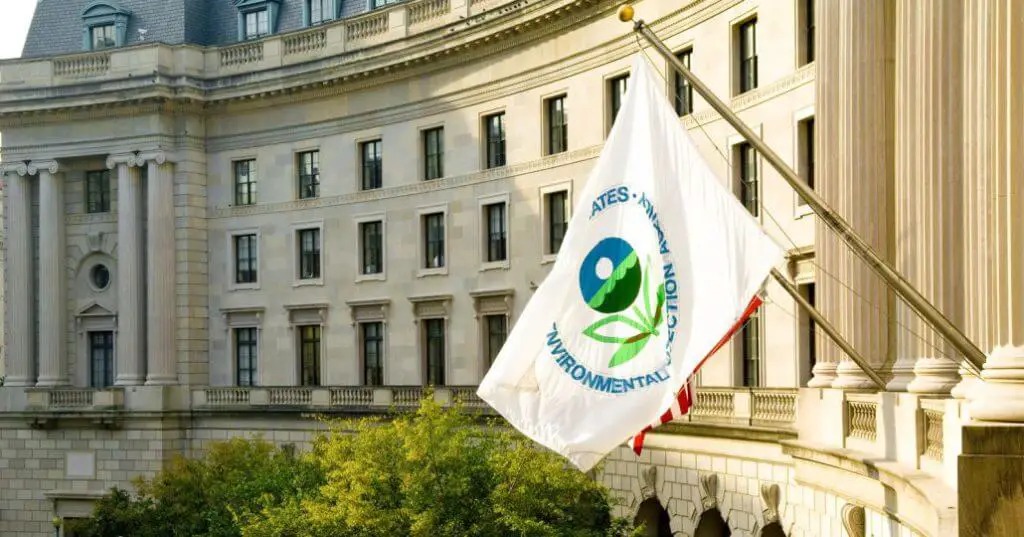EPA (Environmental Protection Agency) Mission and Vision Statement Analysis

EPA’s mission statement is “protecting human health and the environment.” The statement revisits the purpose of the organization, which is to do everything possible to secure the stability of the environment and the health of the people. The following points relate to this mission statement by EPA.
- Improving health
- Protecting the environment
While fulfilling its mandates, EPA (Environmental Protection Agency) indicates that the environment and the health of humankind are inseparable. The organization understands in the absence of a clean and healthy environment, the health of the people starts to dwindle, and this leads to its diverse efforts to safeguard the two. For instance, EPA is responsible for minimizing toxins and chemicals that compromise human health by spearheading initiatives that produce safer ones, while regulating and setting limits for the harmful ones. Additionally, this organization warns people of impending environmental dangers.
Introduction
The United States Environmental Protection Agency dubbed EPA is a national body that has demonstrated its commitment to its mission and vision statements ever since its establishment following President Nixon’s proposition in 1970. The outcomes following its launch prove that EPA is the leading and dominant federal arm in what it does.
The concept of vision statement reveals the need for a company to establish a growth direction, something that the founders of EPA got right during its creation. EPA vision focusses on environmental conservation efforts to benefit societies. On the other hand, a mission statement comprises the ways through which a company runs its activities, and EPA complies with this idea by showing that it would specifically concentrate its efforts on protection duties. In addition, EPA identifies various core values such as work-life balance and responsibility that boosts its progress towards its vision.
Vision Statement
EPA’s vision statement is to promote “a clean, healthy and well-protected environment supporting a sustainable society and economy.” In this vision statement, the focus on the environment as the main element that determines the overall wellness of a nation emerges as EPA’s responsibility. The statement has the following characteristics:
- A clean and healthy environment
- Sustainable society and economy
To meet the needs of the first characteristic, EPA (Environmental Protection Agency) uses various strategies, with the enforcement of regulations being the most effective one. The company exercises its powers by compelling other stakeholders to take up the responsibilities of cleaning up the wastes related to their work. For instance, EPA requires all companies that emit smoke in their factories to participate in efforts of reducing air pollution. While applying these measures, EPA directly contributes to the creation of a viable economy where the American society can thrive, satisfying the second component in this vision statement.
Core Values
EPA’s core values include “empowerment and responsibility, excellence, work-life balance, and community.” The company considers these values as the principles that govern its attitudes and practices.
The rise of EPA (Environmental Protection Agency) into a renowned independent arm of the federal government is because of its widespread mentoring of other players to be environmentally conscious, in addition to its workforce. The organization also commends great sacrifices and acknowledges the benefits of working as a unified force for the improvement of humanity.
References
- Ang-Olson, J., & Schroeer, W. (2002). Energy efficiency strategies for freight trucking: potential impact on fuel use and greenhouse gas emissions. Transportation Research Record, 1815(1), 11-18.
- Bosch, J. C., Eckard, E. W., & Lee, I. (1998). EPA enforcement, firm response strategies, and stockholder wealth: An empirical examination. Managerial and Decision Economics, 19(3), 167-177.
- Chen, Y. C., & Lo, S. L. (2016). Evaluation of greenhouse gas emissions for several municipal solid waste management strategies. Journal of Cleaner Production, 113, 606-612.
- Clayton, D. J., Bignell, J. L., Jones, C. A., Rohe, D. P., Flores, G. J., Bartel, T. J., … & Young, L. W. (2015). Summary of the Nuclear Risk Assessment for the Mars 2020 Mission Environmental Impact Statement (No. SAND2015-0836C). Sandia National Lab. (SNL-NM), Albuquerque, NM (United States).
- EPA- About.
- Kacprzak, M., Neczaj, E., Fijałkowski, K., Grobelak, A., Grosser, A., Worwag, M. … & Singh, B. R. (2017). Sewage sludge disposal strategies for sustainable development. Environmental Research, 156, 39-46.
- Kirk, G., & Beth Nolan, S. (2010). Nonprofit mission statement focus and financial performance. Nonprofit Management and Leadership, 20(4), 473-490.
- Seskin, E. P., Anderson Jr, R. J., & Reid, R. O. (1983). An empirical analysis of economic strategies for controlling air pollution. Journal of environmental economics and management, 10(2), 112-124.
- Sexton, K., Marcus, A. A., Easter, K. W., & Burkhardt, T. D. (Eds.). (1999). Better environmental decisions: strategies for governments, businesses, and communities. Island Press.
- Yazhou, W. A. N. G., & Jian, L. I. N. (2011). Empirical research on influence of mission statements on the performance of nonprofit organization. Procedia Environmental Sciences, 11, 328-333.











